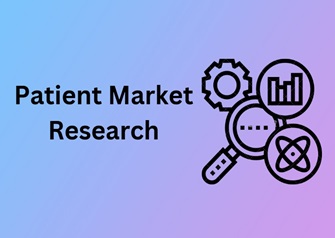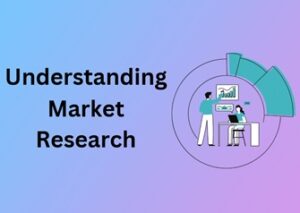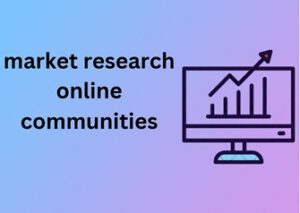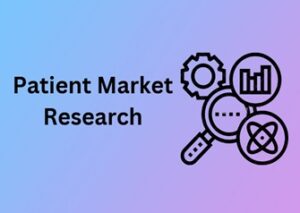Welcome to one of the most fascinating aspects of healthcare marketing—patient market research At its heart, patient market insights boil down to answering one essential question: What do patients really want and need? But it’s not just about preferences; it’s about understanding the people behind those choices—their behaviors, challenges, and how they make decisions.
Let’s break it down. Patient market insights are data-driven discoveries that reveal trends, attitudes, and pain points specific to patients engaging with healthcare products, services, or systems. These insights are crucial because they allow businesses to create better, more personal solutions. Think of it as putting the patient at the core of your strategy. Sounds simple, but there’s so much more to it!
What Does Patient Market Research Really Cover?
Patient-focused research can encompass a wide range of areas. Here are just a few examples:
- Needs and preferences: What do patients want in a treatment, service, or healthcare experience? What matters most to them?
- Barriers to care: What challenges do they face in accessing healthcare or sticking with a treatment plan?
- Behavioral patterns: What influences their choices when selecting a provider, medication, or wellness routine?
- Emotional aspects: Beyond clinical needs, how do patients feel about their healthcare journey? Anxiety, trust, and hope often play a big role.
When you uncover these layers, you gain a richer understanding of how patients interact with the healthcare ecosystem. It’s about more than “customers.” It’s about real people with unique stories.
Why Do These Insights Matter?
Now you might wonder, why spend so much time and effort digging into patient perspectives? Well, the answer lies in the power of knowledge. Better patient insights lead to more precise healthcare solutions. Let’s explore some reasons this work is so impactful:
- Improving patient outcomes: By understanding what patients truly need, healthcare providers and businesses can design solutions that are more effective and easier to adopt.
- Building trust: Patients are more likely to stay loyal to companies that genuinely understand and value their concerns.
- Optimizing resources: Data-backed insights mean no wasted energy guessing what patients will find valuable. Instead, efforts are laser-focused on making a real difference.
- Inspiring innovation: Insights can shine a light on gaps in the market, prompting creative approaches to tackle problems that may not even be on the radar yet.
The Art of Listening
At the core of patient market insights lies a skill that’s as simple as it is powerful: listening. Whether you’re paying attention to their preferences, frustrations, or emotional journeys, the key is to tune in with empathy and curiosity. Great insights come from asking the right questions and being genuinely interested in the answers.
Shaping Strategies: How Patient Perspectives Alter Business Decisions
When it comes to building a solid strategy for healthcare businesses, the voice of the patient holds unparalleled significance. Every business decision, whether it’s a new product launch, service improvement, or even marketing strategy, can be fine-tuned by listening to and understanding what patients truly need and value. But how does all this translate into altering business decisions? Let’s take a closer look!

The Ripple Effect of Patient Perspectives
Think of patient perspectives as the compass guiding your strategic decisions. When patients share their pain points, preferences, or unmet needs, they highlight crucial areas where businesses can either improve or innovate. Without this input, even the most well-intentioned decisions can miss the mark, leaving businesses disconnected from the people they aim to serve.
For example, let’s say patients often express frustration around overly complicated refill processes for prescriptions. If this insight reaches decision-makers, they can prioritize optimizing this process—whether through digital tools, automation, or improved communication. The ripple effect? Happier patients, improved loyalty, and likely better outcomes for all involved.
Bridging the Gap Between Products and Real-World Needs
One of the most exciting impacts of patient insights is the way they bridge the gap between a healthcare provider’s offerings and what patients genuinely value in their everyday lives. Businesses often make the mistake of assuming what matters to patients, but direct feedback ensures priorities are aligned.
For instance, a pharmaceutical company might invest heavily in R&D for a complex treatment with top-tier efficacy stats, yet patients may express that they’ll only use it if the administration method is less invasive or if it’s more budget-friendly. Patient-driven insights shape decisions about both product design and delivery to meet these real-world needs.
Turning Insights into Tangible Actions
Merely collecting patient feedback isn’t enough. The magic lies in acting on it. Businesses use patient insights to:
- Prioritize Resources: Focus investment on solutions that patients truly value.
- Pivot Strategies: Realign marketing campaigns or service designs to address evolving patient needs.
- Enhance User Experience: Streamline systems or create user-friendly platforms based on common challenges patients face.
When strategists ground their decisions in patient data, it fosters a sense of trust between the business and the people it’s serving.
Making Room for Continuous Improvement
Healthcare is dynamic, and patient needs are constantly evolving. Businesses that listen consistently and don’t treat market research as a one-off project are the ones that stay ahead of the curve. Encouraging a feedback loop shows patients you’re not just listening once—you’re committed to listening always. Over time, this builds long-term trust, loyalty, and satisfaction, keeping businesses not just reactive but proactive.
Tools of the Trade: Effective Techniques in Gathering Patient Data
When it comes to understanding patient behavior, preferences, and needs, the process begins and ends with robust and effective data collection. Gathering patient data isn’t just about casting a wide net; it’s about using the right tools to dive deep, pinpoint insights, and ensure the collected information truly supports actionable decisions. Here, we’ll explore some tried-and-tested techniques to gather patient data while keeping the process both effective and patient-centered.
1. Surveys and Questionnaires
Let’s start with a classic: surveys and questionnaires. These tools remain a staple in gathering patient data because they can be tailored to specific topics, simple to distribute, and easy to analyze. Whether it’s a digital form sent via email or a physical handout at a clinic, these tools offer patients an opportunity to share their experiences, preferences, and feedback.
Pro Tip: To ensure better engagement, keep surveys short, include clear instructions, and use open-ended questions sparingly. And yes, incentives like discounts or freebies can go a long way in boosting response rates!
2. Focus Groups
Focus groups provide a fantastic opportunity for deeper, qualitative insights. By gathering small groups of patients for a moderated discussion, researchers can uncover nuanced perspectives that are difficult to capture in surveys alone. Patients often feel empowered when their voices are heard in a conversational setting.
Best Practice: Keep the group diverse to allow for a range of perspectives, and ensure a skilled moderator is on hand to guide the conversation away from bias or dominating voices.

3. Social Media Listening
Social media isn’t just for staying in touch with friends—it’s a goldmine for patient insights! People often share their health journeys, concerns, and opinions on platforms like Twitter, Facebook, and Instagram. Social media listening tools can track mentions, hashtags, and sentiment trends to give a real-time pulse on patient perspectives.
Bonus Tip: Use tools like Sprout Social or Brandwatch to dive into patient conversations while keeping an eye on trending hashtags in the healthcare sector. But remember to respect privacy and avoid breaching ethical boundaries.
4. Patient Interviews
Nothing beats one-on-one time with patients when you’re looking for detailed, personalized insights. Conducting patient interviews allows researchers to ask follow-up questions, explore individual experiences, and build trust.
Expert Advice: Take time to establish rapport with patients before diving into the details. It’s important to assure patients that their responses will remain confidential and be used purely for research purposes.
5. Wearable Devices and Apps
Technology has opened up exciting new avenues for gathering patient data. Wearables like smartwatches and health apps can track real-world health behaviors, such as activity levels, sleep patterns, heart rate, and more. This type of data is objective and reflects how patients behave in daily life, devoid of recall bias.
Key Consideration: Always be transparent about how the data from wearables will be used and ensure compliance with data privacy regulations such as HIPAA or GDPR.
6. Claims and EMR Data
Patient claims data and electronic medical records (EMRs) serve as invaluable sources of historical data. By analyzing these data sets, healthcare organizations can identify trends in diagnoses, treatments, and outcomes.
Caution: Access to this data requires strict adherence to privacy and security guidelines, so always work with institutions to ensure compliance with regulatory frameworks.
Beyond Surveys: How to Capture Real-World Patient Behavior
When it comes to patient market research, surveys have been a trusty go-to tool for years. But let’s be honest: people’s responses on surveys don’t always reflect their real-world actions. Maybe they want to provide the “right” answer or simply don’t remember small details of their behavior. This is why stepping beyond surveys is essential when aiming to capture the whole picture of patient behavior. Let’s explore how to go beyond the checkbox questions and get to the heart of real-world insights.
Why Real-World Behavior Matters
What patients say they do versus what they actually do can sometimes be worlds apart. Understanding real-time patient actions—not just their intentions—is key to more effective decision-making in healthcare marketing, product development, and service offerings. It’s like the difference between watching a cooking show and actually cooking: one gives you ideas, the other provides the experience.
Techniques for Gaining Real-World Patient Insights
Fortunately, there are plenty of innovative ways to move the needle when discovering how patients act in the real world. Here are some proven strategies:
- Observational Studies: Observing how patients interact with healthcare services or products in real-life settings can be incredibly telling. For instance, are they using a digital health app the way it was designed? Or are they finding creative workarounds?
- Wearables and Health Apps: Devices like fitness trackers, heart rate monitors, and apps that log medications or symptoms offer unfiltered, continuous data from patients in their everyday lives. This is raw, authentic behavior—no survey bias included!
- Social Media Listening: Patients frequently share their healthcare journeys and opinions on platforms like Twitter, Reddit, or Facebook groups. By analyzing these organic conversations, researchers can pick up on trends, challenges, and unmet needs without directly interfering with the patient voice.
- Ethnographic Research: This method takes it a step further by embedding researchers into patients’ lives, enabling a richer understanding of cultural, social, and emotional factors affecting behavior. It’s immersive and incredibly impactful.
- Patient Diaries: Whether digital or traditional, asking patients to journal their experiences with treatments, symptoms, or medical appointments provides a snapshot of their day-to-day lives. The personal touch of diaries can reveal insights that structured methods might miss.
The Role of Technology
Technology is a game-changer when it comes to capturing real-world behavior. AI-powered analytics, geolocation tracking, and machine learning allow for precision insights into patient habits without being intrusive. For instance, geotracking can help researchers understand how patients access healthcare facilities, while AI can analyze patterns in wearable data.
However, technology isn’t a silver bullet. It needs to be complemented by human intuition and context to truly understand the “why” behind the data.
Tips for Success
Want to make the most of your real-world research? Here are some helpful tips:
- Combine Methods: Using multiple approaches (e.g., wearables, social media, and ethnography) will produce a deeper, multidimensional understanding of patient behavior.
- Be Context-Sensitive: Patients behave differently based on cultural and emotional contexts. Understanding those contexts will add meaningful layers to your insights.
- Engage Patients: Real-world research shouldn’t feel like a surveillance project. Transparency about how and why data is being collected builds trust with patients and ensures ethical standards.
- An Open Mind: Be prepared to encounter unexpected or counterintuitive findings! These are often the real gems in patient research.
Ethical Considerations: Respecting Privacy While Gathering Insights
When it comes to gathering patient market insights, there’s one topic we simply cannot ignore — ethics. As much as data is the currency of modern healthcare strategies, it’s critical to remember that behind every data point is a real person. Building trust with patients while respecting their privacy isn’t just a nice-to-have, it’s a non-negotiable. So, how do we strike the balance between obtaining meaningful insights and safeguarding personal information? Let’s dive into it.
Why Ethics Matter in Patient Research
The healthcare industry holds immense responsibility when it involves patient data. After all, this is not just any data — it’s information about people’s health, families, and lives. mishandling it can lead to a breach of trust, legal issues, and, most significantly, harm to the very people we aim to help. Prioritizing ethics in patient market research ensures that the process not only complies with regulations but also fosters a sense of accountability and compassion.
Key Principles to Keep in Mind
If you’re unsure about how to embed ethical considerations into your research process, don’t worry. Here are the key principles to guide you:
- Informed Consent: Make sure participants fully understand what their data will be used for, how their privacy will be protected, and their rights to withdraw at any time.
- Transparency: Open communication is crucial. Let patients know the purpose of the research and what outcomes are expected.
- Minimal Data Collection: Only gather the information you truly need. If something doesn’t directly contribute to your research goals, it’s better left uncollected.
- Data Anonymization: Strip away personally identifiable information (PII) whenever possible to protect the identities of participants.
- Compliance with Regulations: Understand and abide by laws such as GDPR (General Data Protection Regulation) or HIPAA (Health Insurance Portability and Accountability Act). This is non-negotiable.
Best Practices for Ethical Patient Research
So, what does ethical patient research look like in action? Here’s how to set a strong foundation:
- Build Trust Through Communication: Patients feel more comfortable participating in research when they know you genuinely care about their well-being. Regular updates and clear information help create a relationship of trust.
- Use Secure Technologies: Whether you’re conducting surveys, interviews, or observational studies, make sure your technology platforms are secure and compliant with data protection laws.
- Monitor Data Use Continually: Ethical considerations don’t stop once data collection ends. Be mindful of how information is analyzed and shared. Always evaluate if your approach aligns with your principles.
Current Trends: Adapting to Shifts in Patient Needs and Preferences
Staying ahead of the curve in patient market research is, without a doubt, a challenge. In a rapidly evolving healthcare landscape, what patients want and need today might look very different tomorrow. So, how do you ensure your strategies align with these shifting trends? Let’s dive into it!
1. The Rise of Personalized Care
One of the most significant shifts we’ve observed is a growing desire for personalized care. Patients no longer want a one-size-fits-all approach. They’re looking for treatments, advice, and resources tailored to their unique situations. This trend is fueled by advances in technology—such as AI and big data—that allow healthcare providers and businesses to deliver this hyper-personalized touch. Incorporating personalization into your research strategy is not just a good idea; it’s essential.
Tip: When gathering patient insights, ask questions that delve deeper into individual preferences. Find out their pain points, lifestyle habits, and even cultural or demographic-specific needs. It’s all about creating meaningful solutions based on what really matters to them.
2. Digital Health Tools Are Reshaping the Landscape
Tech-savvy patients are here to stay, and they’re bringing their devices with them! From wearable technology to health-monitoring apps, digital tools make managing health more convenient for patients. But they also give researchers incredible opportunities to track trends in real time.
- Use wearable data to monitor patient activity and wellness patterns.
- Leverage telehealth feedback to understand barriers to accessing care.
- Analyze app usage to get a glimpse into health priorities—whether it’s monitoring diet, exercise, or chronic condition management.
Harnessing this data effectively allows you to identify gaps and better predict emerging needs.
3. Mental Health Destigmatization
Another transformational trend? A wider recognition of mental health as part of overall wellness. Patients increasingly expect mental health to stand on equal footing with physical health when it comes to care provision and market research. If your strategy doesn’t account for mental health needs, your insights could be missing a critical piece of the puzzle.
Pro-Tip: Include mental health considerations in your studies—even if they’re not the primary focus. From stress to sleep, mental health influences many areas of a person’s well-being, and patients now expect it to be a normalized part of healthcare discussions.
4. A Push for Greater Patient Advocacy
Patients are stepping into a more active role in their own care. They want a seat at the table when decisions are being made, whether it’s about treatment plans, community programs, or product development. This focus on advocacy requires researchers to truly listen—not just observe—what patients are saying.
Ensure your research strategies include opportunities for authentic patient input. Host focus groups, nurture honest social media discussions, or even invite a patient representative to contribute to research projects. Empower their voices!
5. Sustainability and Ethical Practices
Finally, today’s patients are more values-driven than ever. Many are aligning their healthcare choices with personal beliefs around environmental sustainability and ethical practice. Do they want eco-friendly alternatives in packaging for over-the-counter products? Are they concerned about the equitable distribution of resources? Pay attention to these “bigger picture” themes—they’re influencing patient preferences in powerful ways.
Creating Actionable Insights: Turning Patient Data Into Meaningful Results
So, you’ve gathered a mountain of patient data—surveys, interview transcripts, real-world behavior summaries—but now what? The real magic doesn’t just lie in collecting data. Nope! The key to success is in turning that data into actionable insights that can actually drive meaningful results. Sounds like a lot? Don’t worry—we’re about to break it down in a simple, friendly way. Let’s dive in!
The “So What?” Factor: Finding Meaning in Data
One of the first things to ask yourself when looking at patient data is: “So what?” Why does this particular piece of information matter? It’s easy to get bogged down in raw data—percentages, graphs, and tables. But data on its own isn’t useful. The goal is to understand the story behind the numbers and figure out how it connects back to your mission.
For example, if patient feedback surveys show that 60% of patients struggle to understand aftercare instructions, the “so what?” might be, “We need to simplify our communication process to improve outcomes.” See? You’re already on your way to actionable insights!
Break It Down: Steps for Generating Actionable Insights
Alright, let’s get practical. Here are four steps to help you turn patient data into meaningful results:
- Identify the Priorities: Not all data is created equal. Focus on the areas most critical to your goals. Are you trying to enhance patient experience, drive adherence, or design better treatments?
- Segment Your Audience: Patients are not a monolith. Breaking down insights by demographic, geography, or condition will help you tailor your strategy.
- Spot Patterns and Trends: Look for recurring themes in the data. Are certain barriers or concerns cropping up again and again? Those are golden opportunities for improvement.
- Co-Create Solutions: Use your data findings as the foundation for collaboration. Engage patients, caregivers, and providers to build practical, patient-centric solutions.
Visualization: The Secret Sauce for Clarity
Let’s talk about visuals for a second! While spreadsheets and wordy reports are critical for some behind-the-scenes work, visual storytelling can be a game-changer when communicating insights. Consider using:
- Infographics: Summarize your findings with a visually striking flow of information.
- Heat Maps: Want to show an area of concern or highlight trends? Heat maps are your best friend.
- Dashboards: Interactive tools can help you track progress and adjust strategies on-the-fly.
Remember, the end-user of your insights (whether it’s leadership, stakeholders, or patients themselves) appreciates clear and simple summaries. A beautifully crafted chart or visual can stick in their minds far better than five pages of text.
Closing the Loop: Application in the Real World
The value of actionable insights doesn’t end with fancy charts and recommendations. You’ve gotta take those insights and apply them. This might mean launching a new health education program, redesigning a patient portal, or personalizing outreach methods. And guess what? You’re not just winging it because your insights are patient-informed.
But here’s the kicker: it’s essential to follow up. Once you apply your insights, track their impact. Are patient satisfaction scores increasing? Are outcomes improving? This feedback cycle keeps the process dynamic and ensures your strategies remain truly patient-centric.











